Spot shrimp season begins May 19 in most Puget Sound areas and populations look relatively stable, plus the possibility of digging into coastal razor clam beaches Leave a reply
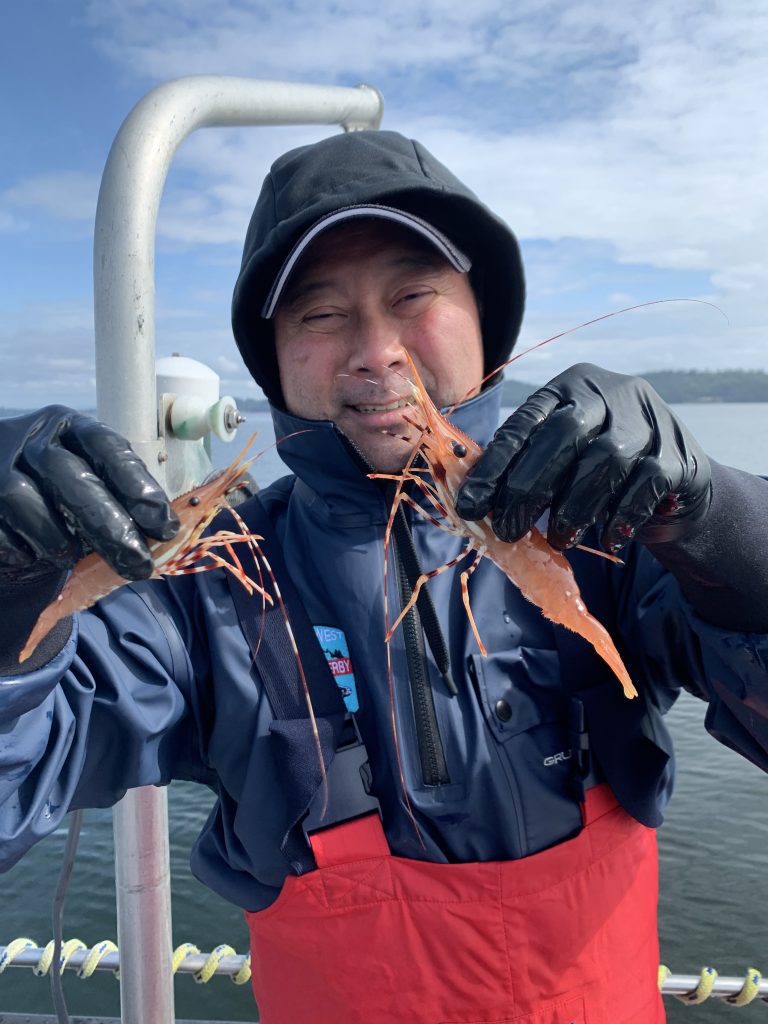
By Mark Yuasa
Do you consider yourself a planner? I must confess to being a detailed organizer especially when it comes to any type of fishing excursions, and now is the time to lock in your schedule for a spot shrimp season that gets underway on May 19.
“We’ve been conducting our test fisheries and haven’t seen nothing too abnormal with good abundances in most places,” said Don Velasquez, a Washington Department of Fish and Wildlife (WDFW) Puget Sound shellfish manager. “The one exception is southern Puget Sound where we’re still seeing a poor spot shrimp population.”
The decision for a midweek opener stems from the fact that some sport fisheries had blown out their spot shrimp catch quotas with a single weekday opening in 2020. WDFW isn’t expecting effort or catch to dissipate in 2021.
Spring-time is a rite of passage for anglers to pursue these giant prawn-size spot shrimp, which are the largest – averaging 8 to 12 inches long – of more than 80 shrimp species in local marine waterways. Only seven are commonly caught by anglers with most lurking at depths of 30 to 300 feet.
The western Strait of Juan de Fuca in Sekiu (Marine Area 5) is open daily starting May 19 until quota is attained or Sept 15 whichever comes first.
Fishing allow during daylight hours only. In the western Strait east of Bonilla-Tatoosh line at Neah Bay (4) the season remains closed until further notice although it didn’t open in 2020.
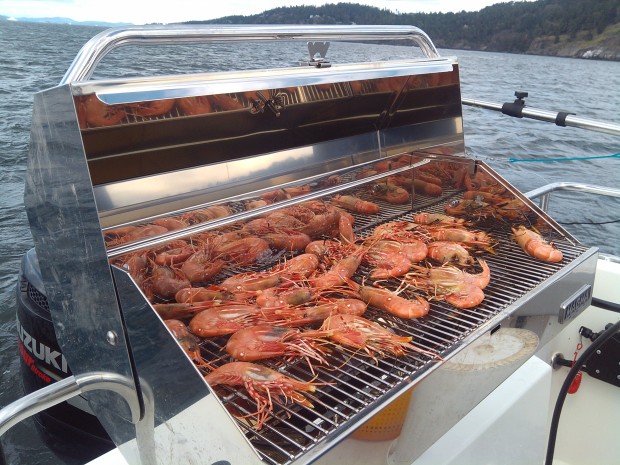
The eastern Strait of Juan de Fuca (Marine Area 6) outside of Discovery Bay is open May 19-22, June 2-5 and June 16-19. If enough quota remains then it would reopen on July 15-17 and possibly July 29-31. Fishing allow during daylight hours only. The coonstripe shrimp fishery will likely begin sometime after the spot shrimp season ends with depth restrictions.
The Discovery Bay Shrimp District (6) will be open May 19 and May 22 only from 9 a.m. to 3 p.m. each day. If enough quota remains then it would reopen on June 2 only.
The San Juan Islands (7 East and 7 West – northern Rosario Strait, Bellingham Bay, Sucia and Matia islands, Strait of Georgia, San Juan Channel, Speiden Channel, Stuart and Waldron islands) are open May 19-22, June 2-5 and June 16-19. Fishing allow during daylight hours only. If enough quota remains then it would reopen on July 15-17 and possibly July 29-31. The coonstripe shrimp fishery in 7 East will likely begin sometime after the spot shrimp season ends with depth restrictions.
The San Juan Islands (7 South – Iceberg Point, Point Colville, Biz Point, Salmon Bank) are open May 19-22 and June 2-5 only. Fishing allow during daylight hours only. No additional openings thereafter are likely.
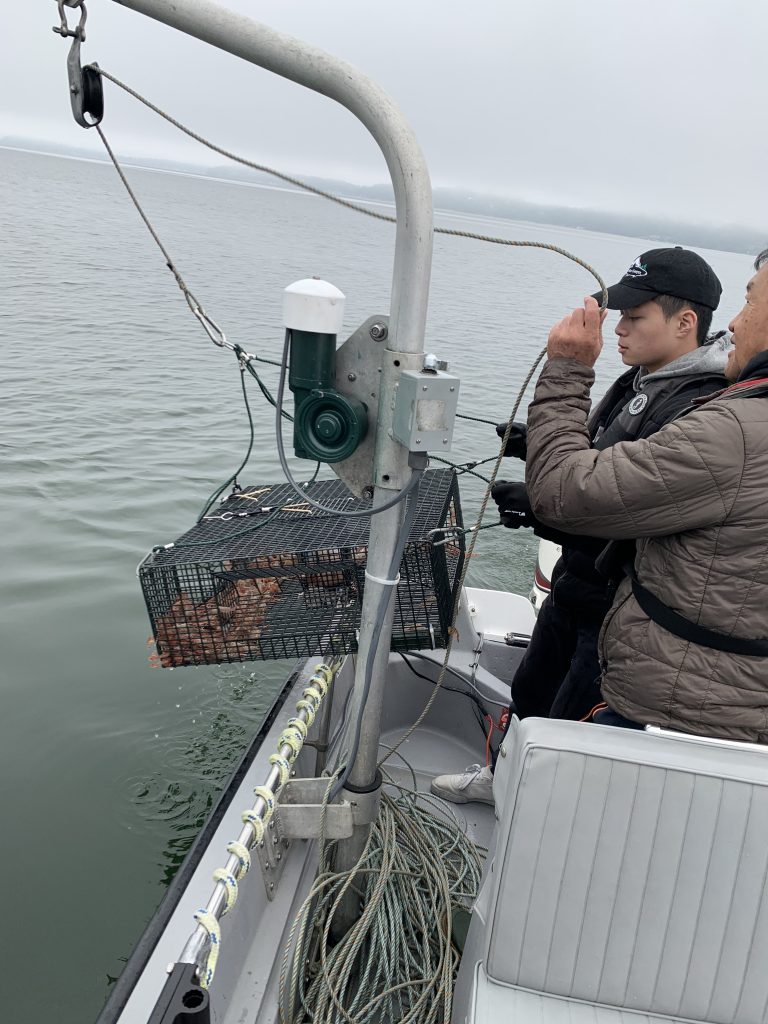
The east side of Whidbey Island (8-1 and 8-2); northern Puget Sound (9); and south-central Puget Sound (11) are open May 19 from 9 a.m. to 1 p.m. If enough quota remains in any of the three areas then it could reopen on June 2 from 9 a.m. to 1 p.m. The coonstripe shrimp fishery in Areas 8-1, 8-2, 9 and 11 will likely be open daily beginning June 1 with depth restrictions.
Central Puget Sound (10) excluding Elliott Bay is open May 19 only from 9 a.m. to 1 p.m. Elliott Bay is open May 19 only from 9 a.m. to 12 p.m. Extra fishing days in both areas is highly unlikely due to expected high catch rates.
In Hood Canal (12) spot shrimp fishing will be open May 19, May 22, June 2, June 5 and June 16 from 9 a.m. to 1 p.m. each day. If enough quota remains then it would reopen on June 19 and possibly June 30 from 9 a.m. to 1 p.m. each day. The Skokomish Park at Potlatch (also known as “Saltwater Park”) Hood Canal boat launch and associated facilities, located just north of Potlatch State Park in southern Hood Canal, is currently closed until further notice, and a date for reopening has not been announced.
Southern Puget Sound (13) is closed for the 2021 season due to poor spot shrimp abundance levels, but will likely be open daily beginning June 1 for coonstripe shrimp with depth restrictions.
For specific season dates, hours of day fishing are allowed, what other shrimp species can be harvested, daily catch limits and rules on mesh size for pots used, consult the WDFW website at https://wdfw.wa.gov/.
The total spot shrimp sport harvest was 198,023 pounds in 2020, and 208,223 pounds in 2019 and 194,863 in 2018. The non-tribal commercial take was 100,001 pounds in 2020, and 94,651 pounds in 2019 and 97,578 in 2018. The grand total for state commercial and recreational harvest was 298,024 pounds in 2020, and 302,874 pounds in 2019 and 292,441 in 2018.
Sport and non-tribal commercial fishermen split a ~300,000-pound spot shrimp yearly catch quota with 70 percent allocated to the sport fishery. The tribal fishery has a ~300,000-pound catch quota. In 2019, 613,300 pounds was caught by all user groups.
Here’s how sport anglers fared during the initial opening date(s) in 2020:
Eastside of Whidbey Island (8-1 and 8-2) – 202 boats with 697 anglers June 11 fished 678 pots (3.36 pots per boat average) and caught 46,044 spot shrimp for 227.94 spot shrimp per boat.
Northern Puget Sound (9) – 69 boats with 231 anglers June 11 fished 242 pots (3.51 pots per boat average) and caught 17,901 spot shrimp for 259.43 spot shrimp per boat; and 92 boats with 287 anglers Aug. 12 fished 286 pots (3.11 pots per boat average) and caught 20,203 spot shrimp for 219.60 spot shrimp per boat.
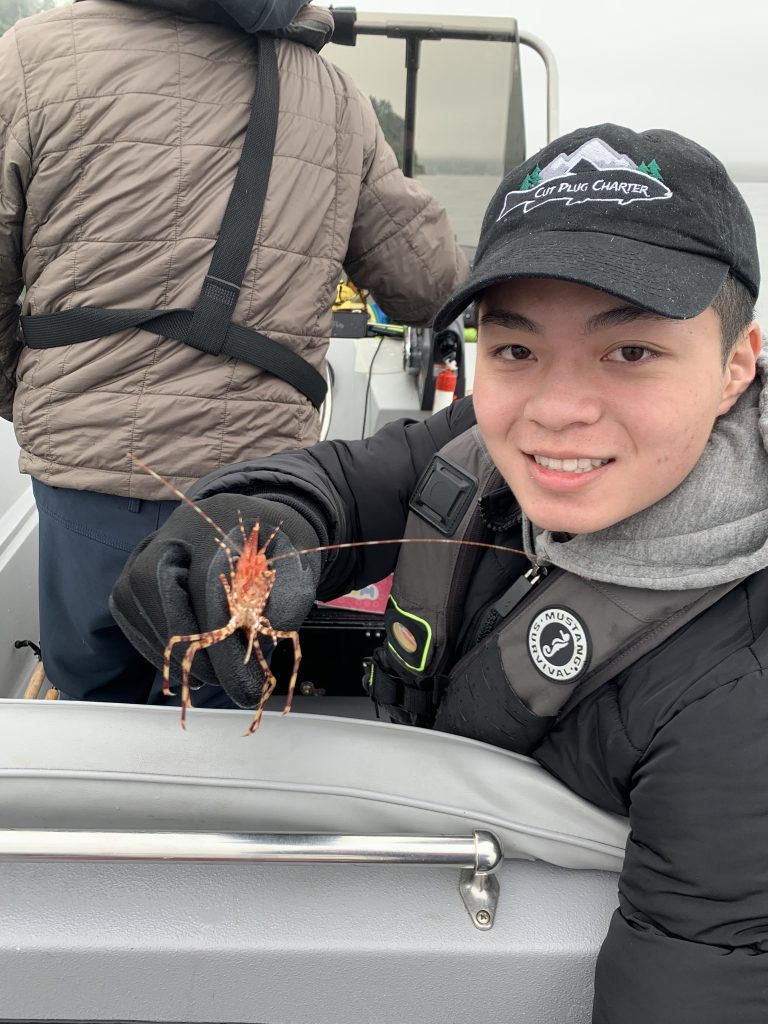
Elliott Bay – 131 boats with 503 anglers June 11 fished 460 pots (3.51 pots per boat average) and caught 34,137 spot shrimp for 260.59 spot shrimp per boat.
Central Puget Sound (10) – 23 boats with 74 anglers June 11 fished 77 pots (3.35 pot per boat average) and caught 4,901 spot shrimp for 213.09 spot shrimp per boat.
South-central Puget Sound (11) – 85 boats with 278 anglers June 11 fished 289 pots (3.40 pots per boat average) and caught 13,526 spot shrimp for 159.13 spot shrimp per boat.
Hood Canal (12) – 814 boats with 2,849 anglers (includes all-season fishing dates in 2020) fished 2,939 pots (3.61 pots per boat average) and caught 205,266 spot shrimp for 252.17 spot shrimp per boat.
Discovery Bay – 70 boats with 204 anglers (includes all-season fishing dates in 2020) fished 216 pots (3.09 pots per boat average) and caught 13,028 spot shrimp for 186.11 spot shrimp per boat.
Eastern Strait of Juan de Fuca (6) – 623 boats with 1,722 anglers (includes all-season fishing dates in 2020) fished 1,922 pots (3.09 pots per boat average) and caught 97,919 spot shrimp for 157.17 spot shrimp per boat.
San Juan Island (7 South) – 318 boats with 954 anglers (includes all-season fishing dates in 2020) fished 1,032 pots (3.25 pots per boat average) and caught 63,455 spot shrimp for 199.54 spot shrimp per boat.
San Juan Island (7 East) – 200 boats with 553 anglers (includes all-season fishing dates in 2020) fished 624 pots (3.12 pots per boat average) and caught 29,553 spot shrimp for 147.77 spot shrimp per boat.
San Juan Island (7 West) – 472 boats with 1,360 anglers (includes all-season fishing dates in 2020) fished 1,481 pots (3.14 pots per boat average) and caught 85,337 spot shrimp for 180.80 spot shrimp per boat.
(Note: This information is only for the boats interviewed in 2020. The total number of boats, shrimpers, pots, and spot shrimp caught in the fishery are higher than these numbers above reflect.)
Coastal razor clam digging still a possibility
There is still a sliver of hope that WDFW will be able to salvage some late spring-time coastal razor clam digging provided they continue to see a downtrend in marine toxin levels that have hampered what was supposed to be a spectacular 2020-2021 season.
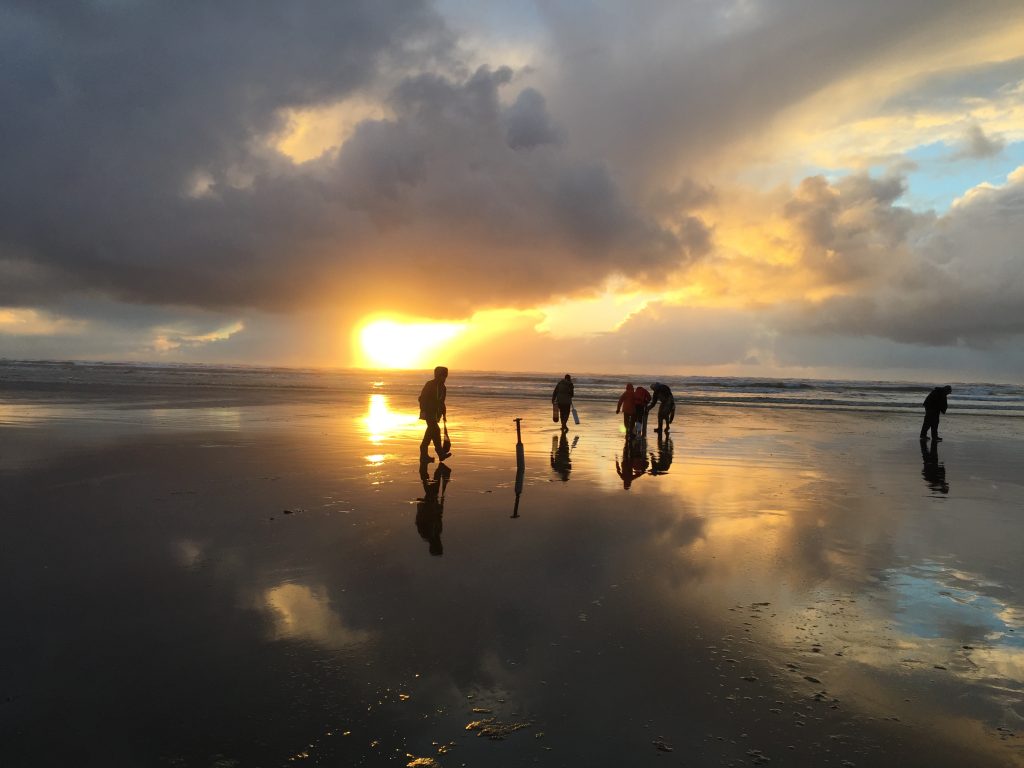
The toxin levels for domoic acid are doing the old dancing around story once again, but the farther north you go, the better it looks at places like Copalis and Mocrocks, according to a WDFW coastal fishery manager.
The latest samples from the Department of Health (DOH) showed domoic acid levels at 19 parts per million at Copalis and Mocrocks, which falls just under the 20ppm cutoff threshold. However, after showing promise early on places like Long Beach on the southern coast have shot back up to 37ppm of late. Another round of test samples was gathered this week although results weren’t available when this story was released.
WDFW and DOH closely monitors marine toxins such as domoic acid – a natural toxin produced by certain types of marine algae – which can be harmful or even fatal if consumed in enough quantities.
Internally, WDFW has been talking with county health officials to see if it’s possible to open certain beaches while staying within parameters of the COVID-19 guidelines. Back in the winter, WDFW decided it would be an all beaches open or none kind of attitude, but it seems that may change.
The DOH usually needs to have two consecutive samples that show levels are below the cut-off threshold before a beach can be open, although this time around DOH may require a third sample since recent results have fallen just under the 20ppm cutoff.
Before moving forward with any beach opening or digging dates, it would need to be discussed with tribal co-managers. WDFW has already been looking at possible digging dates in late April and May.
Usually under normal circumstances this late into the season, WDFW is faced with the recreational razor clam harvest hitting the allocation ceiling on some beaches. Snowy plover issues are also a concern at places like Long Beach.
For Copalis and Mocrocks it appears they could offer digging right up until May 31 when some of the best low tides occur.
The expectations were very high on the 2020-2021 digging season which was cut short when marine toxin levels skyrocketed in late-October and closures became necessary.
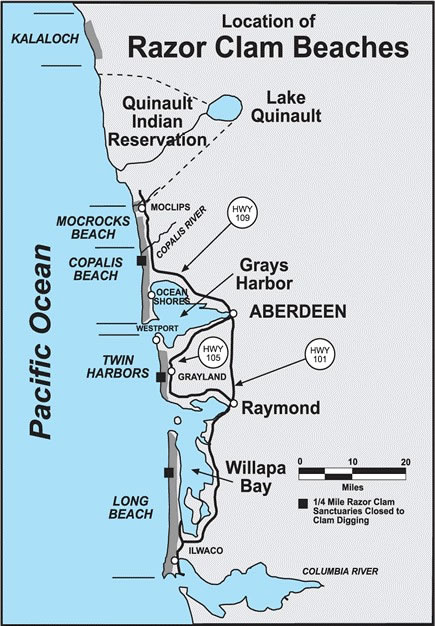
Since 1991, when the toxin was first detected on the Pacific Coast, outbreaks of domoic acid have prompted the cancellation of three entire razor-clam seasons in Washington — the last one in 2002-03.
Twin Harbors Beach never opened in 2015-2016 as marine toxin levels never dipped below the action level. The entire coast was also closed in late May of 2015 when domoic acid spiked well above the cut-off level.
Before the closures last fall, digs at Long Beach, Twin Harbors and Copalis saw a good turnout of 25,390 diggers Oct. 17 with 324,107 clams for a 12.7 per person average; and 2,750 on Oct. 19 with 41,251 for 15.0. At Long Beach, Twin Harbors and Mocrocks it was 7,716 on Oct. 18 with 115,745 for 15.0; and 1,781 with 26,728 on Oct. 20 15.0.
Prior to the closure more than 80,000 digger trips produced close to 1.2-million clams harvested coast-wide.
Public health officials will also be closely monitoring the incidence of COVID-19 that was rising in recent days. WDFW will also rely on their guidance when making in-season adjustments to the schedule if necessary, to reduce public health risks.
Razor clam digging is a huge money maker generating $25- to $35-million for small coastal communities who rely on these opportunities during the lean tourist times in autumn, winter and spring to help boost their economy.
Here are the most optimal upcoming low tides: Monday, April 26, minus-0.8 at 6:54 a.m.; Tuesday, April 27, -1.6 at 7:40 a.m.; Wednesday, April 28, -2.1 at 8:27 a.m.; Thursday, April 29, -2.2 at 9:15 a.m.; Friday, April 30, -1.9 at 10:06 a.m.; Saturday, May 1, -1.4 feet at 10:59 a.m.; Sunday, May 2, -07 at 11:58 a.m.
Monday, May 10, -0.2 at 6:58 a.m.; Tuesday, May 11, -0.6 at 7:33 a.m.; Wednesday, May 12, -0.8 at 8:06 a.m.; Thursday, May 13, -0.8 at 8:40 a.m.; Friday, May 14, -0.7 at 9:14 a.m.; Saturday, May 15, -0.6 at 9:51 a.m.; Sunday, May 16, -0.4 at 10:32 a.m.
Tuesday, May 25, -1.8 feet at 6:36 a.m.; Wednesday, May 26, -2.5 at 7:24 a.m.; Thursday, May 27, -2.8 at 8:12 a.m.; Friday, May 28, -2.8 at 9:01 a.m.; Saturday, May 29, -2.4 at 9:50 a.m.; Sunday, May 30, -1.8 at 10:41 a.m.; and Monday, May 31, -1.1 at 11:34 a.m.
Note: These aren’t actual dates that digging will occur, but provides an outlook of when the most idea low tides will occur. For details, go to http://wdfw.wa.gov/fishing/shellfish/razorclams/.
Nibbles and bites
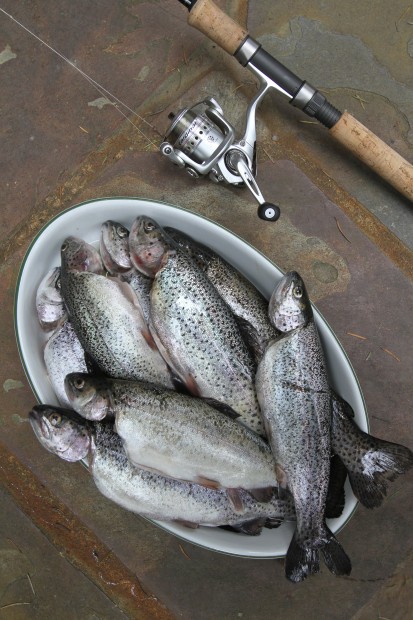
Thousands of rainbow trout are teeming in year-round lakes to boost fishing chances ahead of the traditional statewide opener on April 24-25. Lakes planted from March 30-April 5 are – King County: Angle, 6,532; Desire, 8,064; Morton, 5,500; Spring, 3,000; Twelve, 4,500. Pierce County: Louise, 1,000; Whitman, 2,000; Spanaway, 18,000; Steilacoom, 1,160; Bonney, 1,020; Bradley (juvenile youth only), 1,000; Kapowsin, 10,000; Wapato, 2,000. Snohomish County: Shoecraft, 5,026; Silver, 7,107. Thurston County: Black, 7,631; Longs Pond, 840. Grays Harbor County: Duck, 810; Sylvia, 1,200 plus 123 steelhead; Vance Creek adult pond, 606; Vance Creek juvenile pond, 400; Swano, 350. Kittitas County: Fio Rito, 3,013. Mason County: Spencer, 10,008; Island, 6,587; Jiggs, 500. Clark County: Battle Ground, 6,000; Klineline, 2,500; Lavender, 2,520. Kittitas County: Kiwanas Pond, 600; McCabe Pond, 805; Woodhouse Pond, 310. Lewis County: Mayfield, 5,000. Clallam County: Carrie Blake Park Pond, 155. Additional WDFW stocking details can be found at https://wdfw.wa.gov/fishing/reports/stocking/statewide.
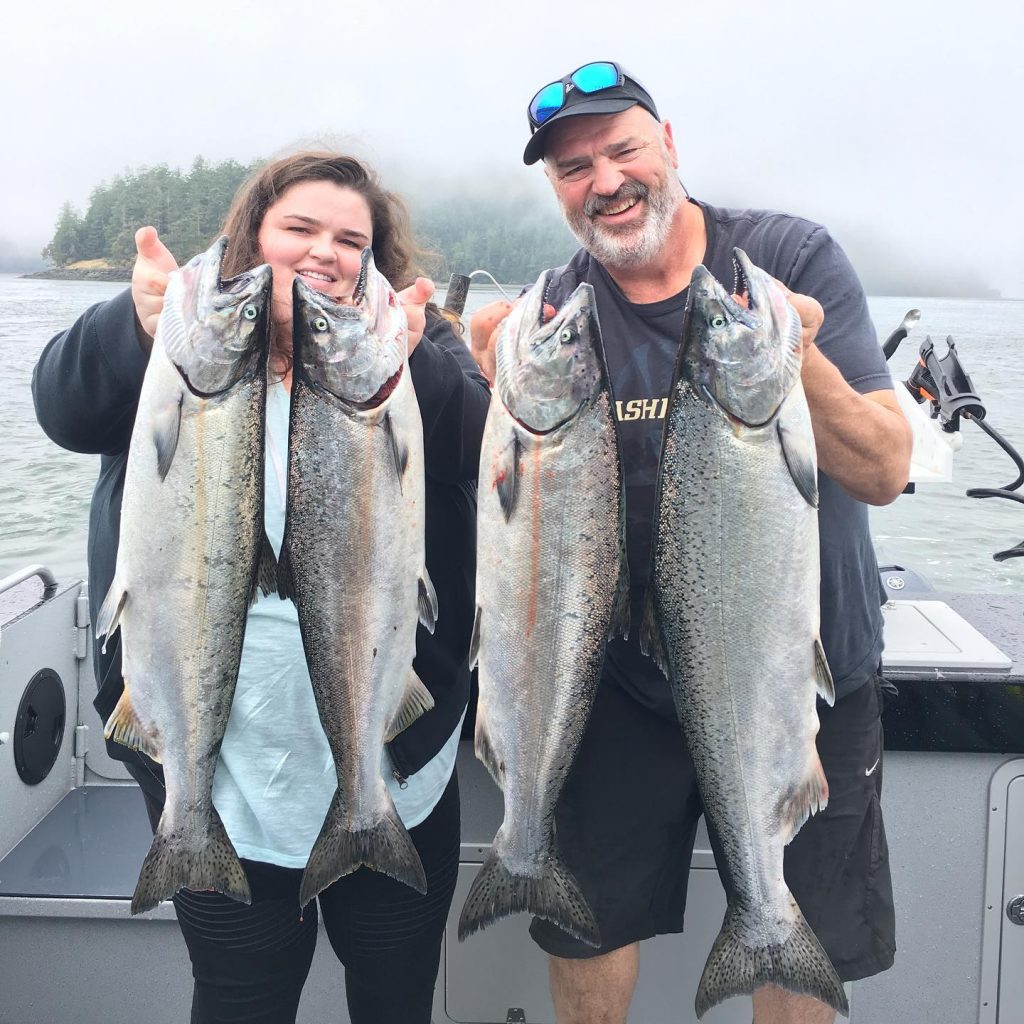
The winter chinook fishery at Sekiu in the western Strait of Juan de Fuca remains decent for fish, 5, to 8 pounds, with a few up to 18 pounds. The fishery is open daily through April 30, and is managed as a season, meaning there’s no guideline to shut it down prematurely. The best action has occurred off the Caves and at Slip Point and Mussolini Rock.
Fishing for lingcod and other bottomfish east of Sekiu in Marine Catch Area 4 off Neah Bay has been very good, and other coastal ports like Westport and Ilwaco report similar results on bottomfish when the weather allows them out of port.
The lingcod fishery from Sekiu in the Strait clear into Puget Sound (Areas 5, 6, 7, 8-1, 8-2, 9, 10 and 13 except 12 is closed) are open May 1 through June 15. A one-lingcod daily limit, and a minimum size limit of 26 inches and maximum size of 36 inches are some reasons why their head-count have increased in Puget Sound of late.
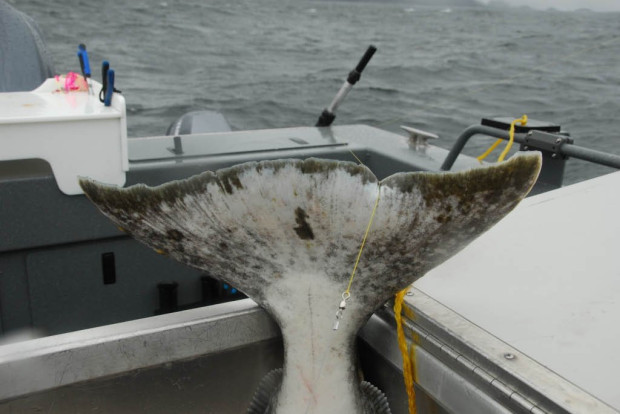
The halibut seasons are looming with the eastern Strait of Juan de Fuca/Puget Sound (Areas 6-10 only) open April 22-May 22 and June 3-26 on Thursdays, Fridays and Saturdays; and May 28, 29 and 30. The western Strait of Juan de Fuca (Area 5) is open May 6-22 on Thursdays and Saturdays; May 28, 29 and 30; and June 3-26 open Thursdays, Fridays and Saturdays. On the coast Neah Bay/La Push (Areas 3 and 4) open May 6-22 and June 3-26 on Thursdays and Saturdays; and May 28 and 30. Westport (Area 2) is open May 6-23 on Thursdays and Sundays; and May 27 only; and could reopen June 17, 20, 24 and 27 if catch quota remains. Ilwaco (Area 1) is open May 6-23 and June 3-27 on Thursdays and Sundays; and May 27. In all marine areas the daily limit is one halibut with no minimum size limit. There is a four halibut annual limit in place.
In Snohomish County, the Lake Stevens kokanee fishery is good with some anglers reporting fast limits. The Lake Roosevelt kokanee fishery is also producing good catches and Rufus Woods Reservoir is decent for large triploid rainbow trout.
Southern Puget Sound (Area 13), is open year-round for hatchery winter chinook. Try Point Fosdick located south of the Narrows Bridge; Fox Point south to Gibson Point on Fox Island; Lyle Point off Anderson Island; Johnson Point near Zittel’s Marina in Olympia; Thompson Cove north of Lyle Point; shoreline just outside the Narrows Marina; and the Sandspit on northwest side of Fox Island east to Ketner’s Point.

